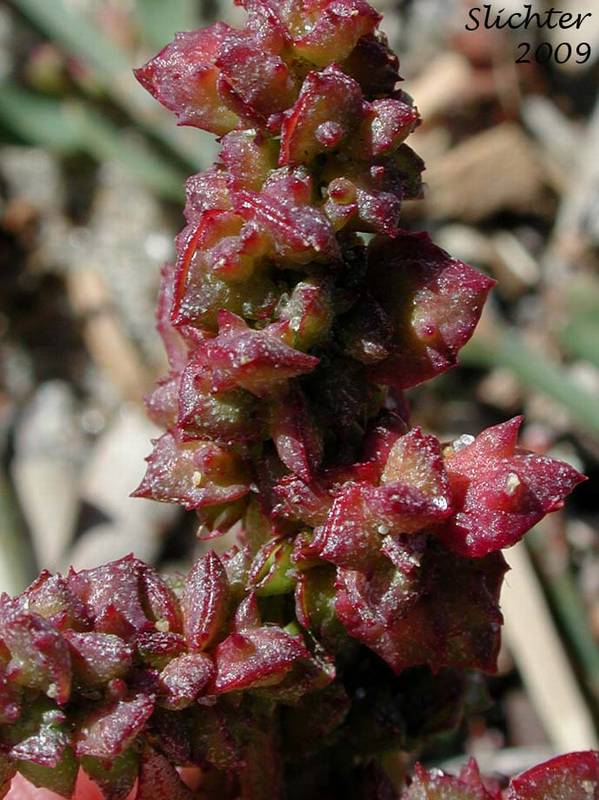Atriplex semibaccata
Atriplex dioica
Australian saltbush, berry saltbush, creeping saltbush
thickleaf orache, saline saltbush
Leaves many, alternate, obovate to elliptic, 5-30 mm. long and 2-9 mm. wide, the base tapered, the margins entire to remotely dentate, the tip obtuse.
Staminate flowers in small, terminal, leafy-bracteate clusters 1.5 mm. wide; pistillate flowers solitary or in few-flowered clusters in most leaf axils.
Fruiting bracteoles fleshy and red at maturity, sessile, strongly veined.
Atriplex semibaccata
Atriplex dioica
Occasionally introduced in eastern and central WA; scattered localities primarily in southwestern US.
Occurring on both sides of the Cascades crest in Washington, but particularly common along the inner and outer marine coast; Yukon Territory to California, east to the Atlantic Coast.
- Local floras:
BC,
CA,
OR,
WA
- Local Web sites:
CalFlora,
CalPhotos,
Flora NW,
PNW Herbaria
WildflowerSearch
iNaturalist (observations)
USDA Plants Database
- LBJ Wildflower Center
- SEINet
- Plants of the World Online
- Encyclopedia of Life
- Wikipedia
- Google Image Search



